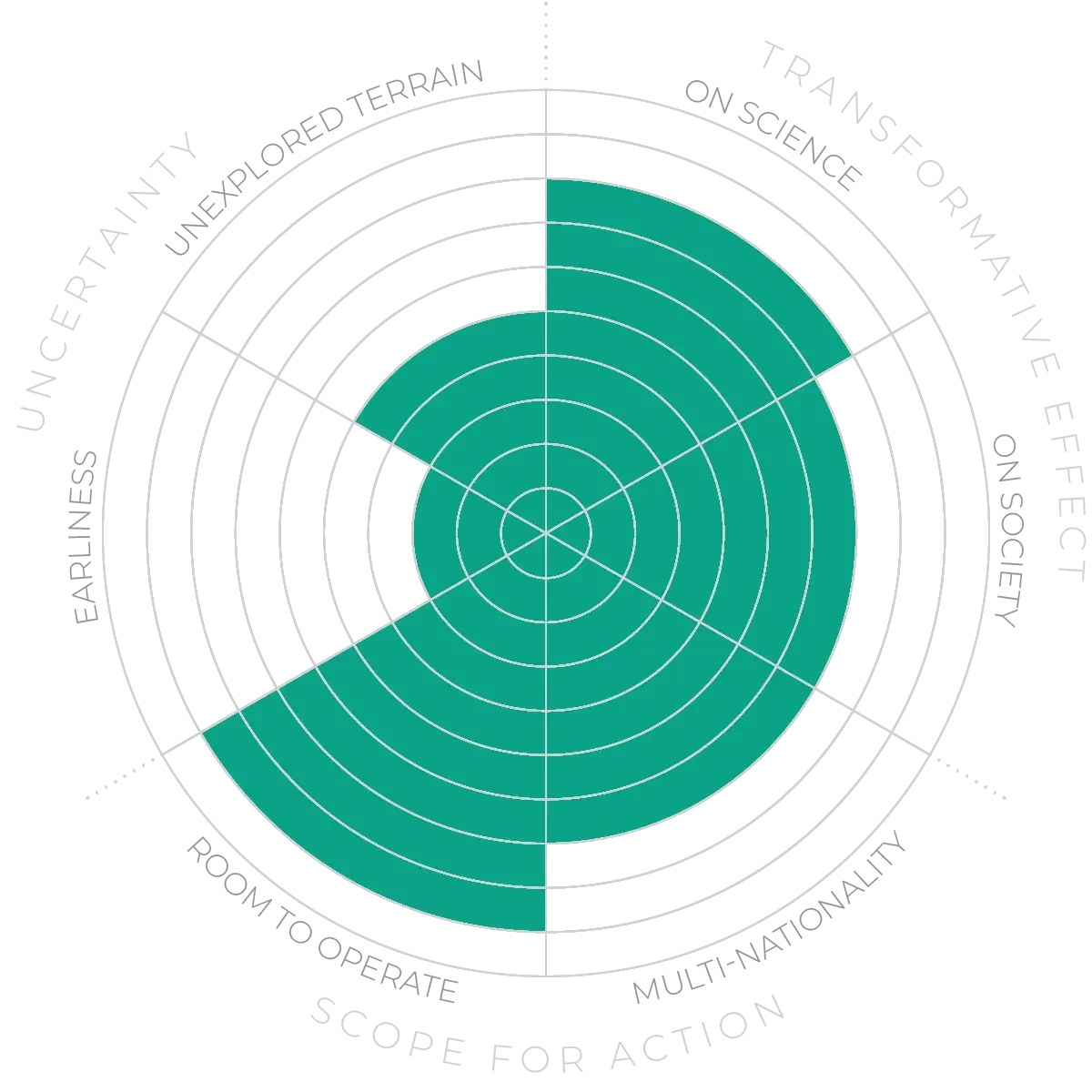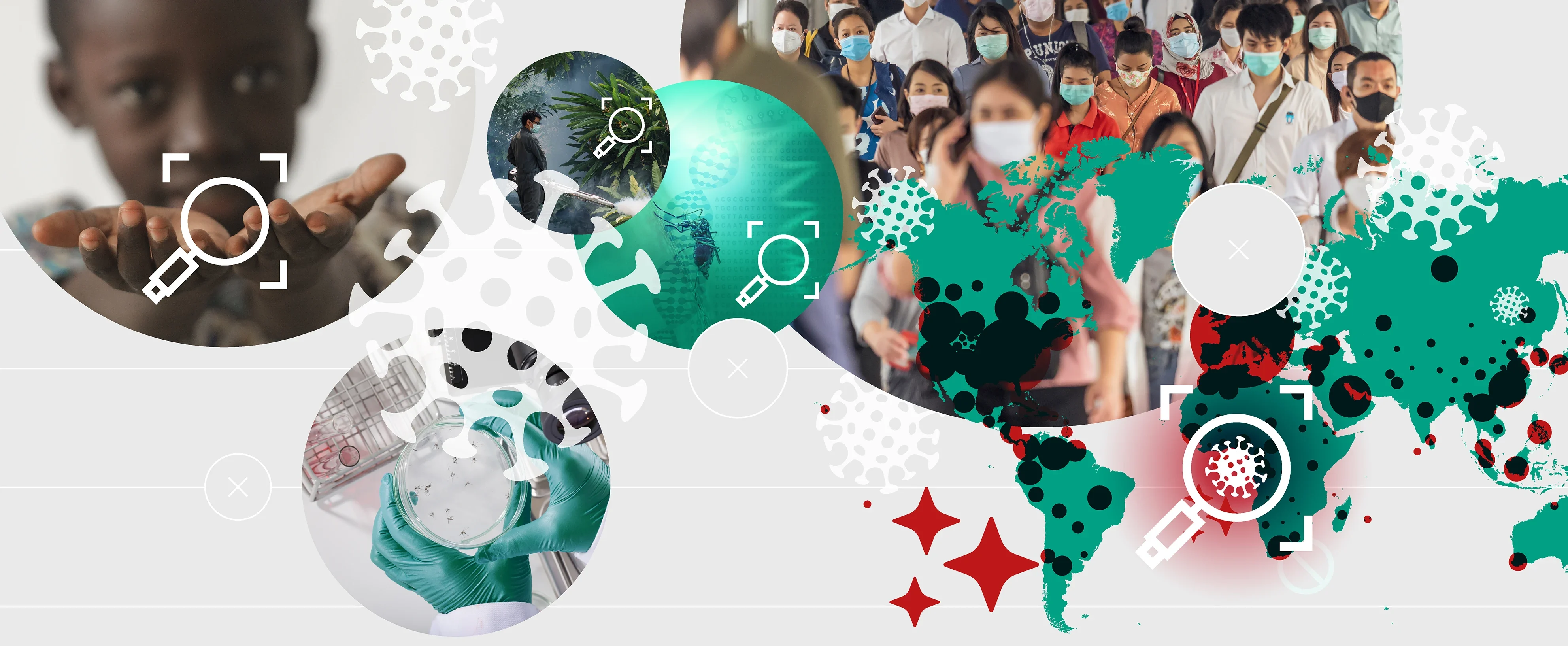Future Horizons:
10-yearhorizon
A global surveillance system is put in place
25-yearhorizon
AI provides spillover predictions
Basic knowledge of microbial life also needs to be improved. Some potential zoonotic pathogens, like H5N1 bird flu, are fairly well-characterised.12 However, the majority of bacteria and viruses have not been studied at all. Researchers are working to change this, for instance by bringing all vertebrate-virus associations together in one database13 and by using AI to help document unknown viruses.14
With this knowledge base in place, it should be possible to predict which pathogens are likely to spill over into the human population and how dangerous they would be if they did.15 AIs trained on these datasets could help make such predictions, leading to early-warning systems.16
However, truly reliable predictions require a recognition that outbreaks are not caused just by highly pathogenic organisms but by human disturbance of ecosystems that allows novel diseases to come into contact with our populations. The One Health framework offers a set of tools with which to attempt this.17 Some models of this type have been developed.18 However, the One Health approach remains under-used: for example, there is little coordination between surveillance of animal diseases and of human diseases.
Zoonotics and evolution across species - Anticipation Scores
The Anticipation Potential of a research field is determined by the capacity for impactful action in the present, considering possible future transformative breakthroughs in a field over a 25-year outlook. A field with a high Anticipation Potential, therefore, combines the potential range of future transformative possibilities engendered by a research area with a wide field of opportunities for action in the present. We asked researchers in the field to anticipate:
- The uncertainty related to future science breakthroughs in the field
- The transformative effect anticipated breakthroughs may have on research and society
- The scope for action in the present in relation to anticipated breakthroughs.
This chart represents a summary of their responses to each of these elements, which when combined, provide the Anticipation Potential for the topic. See methodology for more information.



